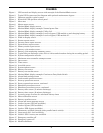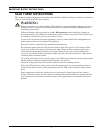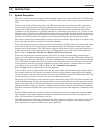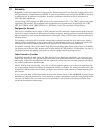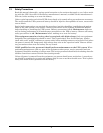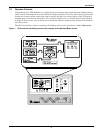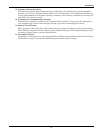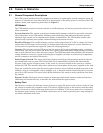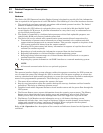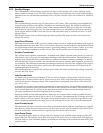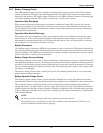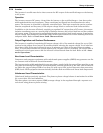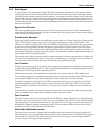
Introduction
7
1.6 Options
A number of options are available from Liebert for your UPS system. (Some options are not available
for all ratings.) Described below are the most frequently provided options. Note that the battery items
(1-3) are required to complete the UPS system. The remaining options provide improved system per-
formance or convenience. Other options are available. Contact your Liebert sales representative for
more information.
1. Battery and Racks
The batteries provide power in the event of a power outage. The Liebert UPS can use a variety of
battery types, provided the battery plant is designed for the UPS DC voltage range and the load
requirements of your application.
2. Battery Cabinets
Valve-regulated, lead-acid (VRLA - sealed) batteries are available in included steel cabinets for
convenient installation and maintenance in otherwise unprotected space. Depending on the UPS
module rating, two or more cabinets may be connected in parallel to provide the desired run time.
3. Module Battery Disconnect
The UPS system utilizes a separate Module Battery Disconnect for remotely located batteries. A
sensing circuit in the UPS module, set at the battery low voltage limit, trips the Module Battery
Disconnect to safeguard the battery from excessive discharge. The Module Battery Disconnect has
an undervoltage release mechanism designed to ensure that during any shutdown or failure mode
all battery potential is removed from the UPS system.
4. Input Current Distortion Filter
This filter reduces input current reflected harmonic distortion to less than 7% reflected THD at
full load and less than 4% reflected THD for modules with the optional 12-pulse rectifier (500kVA
and above). The filter is factory installed within the UPS. This filter also improves the input
power factor to better than 0.92 lagging at full load.
5. 12-Pulse Rectifier
All 500-750kVA models may be ordered with the optional 12-pulse rectifier section; this feature is
standard in 1000kVA models. This provides input isolation and reduces input current reflected
THD at full load to less than 9% or less than 4% with optional input filter.
6. Isolation Transformers
An optional rectifier input isolation transformer is available in a matching transformer cabinet;
this feature is standard in 1000kVA models. A bypass isolation transformer is also available.
7. Three Breaker Maintenance Bypass
This switchboard provides make-before-break maintenance bypass. It includes: UPS Bypass
Input Breaker (BIB), Maintenance Bypass Breaker (MBB) and Maintenance Isolation Breaker
(MIB).
8. Two Breaker Maintenance Bypass
This switchboard provides make-before-break maintenance bypass. It includes: Maintenance
Bypass Breaker (MBB) and Maintenance Isolation Breaker (MIB).
9. Load Bus Synchronization (LBS)
The Load Bus Sync (LBS) option keeps two independent UPS systems (and therefore their critical
load buses) in sync, even when the modules are operating on batteries or asynchronous AC
sources. This means that critical loads connected to both load buses can switch seamlessly
between the two. The automatic bypass operation must be inhibited (operator is able to select pre-
ferred bypass source).
10. SiteScan Central Monitoring System
Liebert manufactures a central monitoring system that automatically displays key UPS measure-
ments and alarms, as well as data from a variety of sensors. This monitoring system activates
alarms so corrective action can be taken. Events and data can be printed in hard copy. Data can
be logged for analysis.
11. Remote Monitor Panel
The UPS system may also be provided with an optional Remote Monitor Panel. This Panel pro-
vides eight LED indicators and may be placed at a convenient location near the critical load. A
functional description of the Remote Monitor Panel is provided in 3.0 - Operation of this manual.



